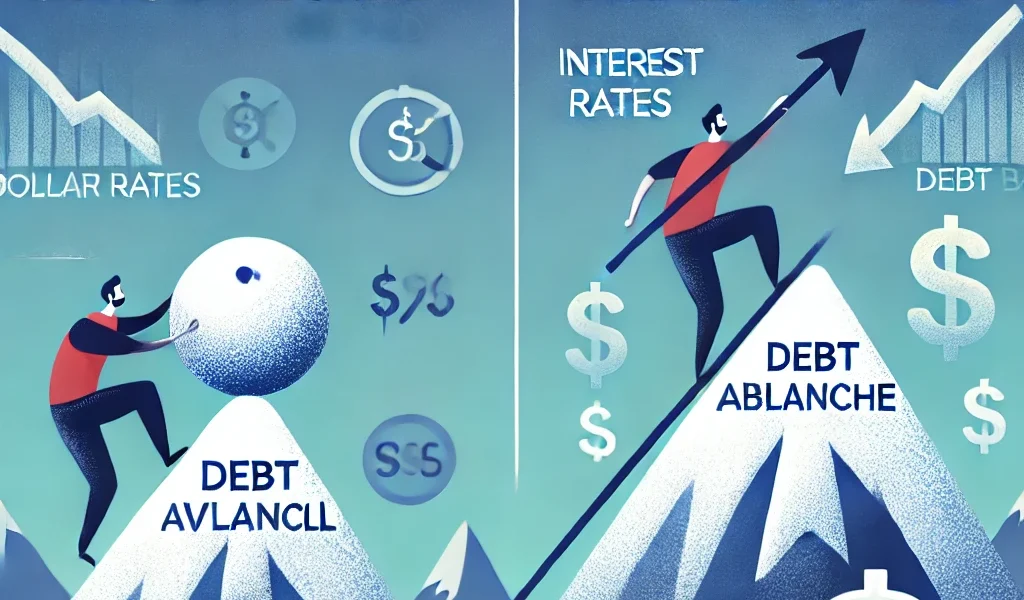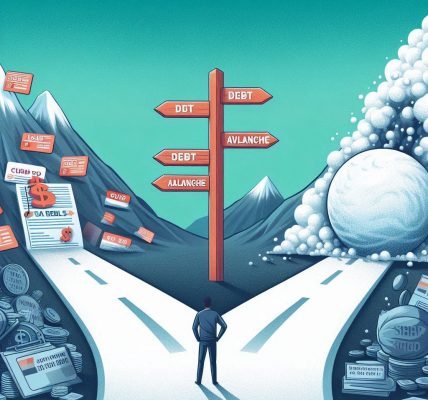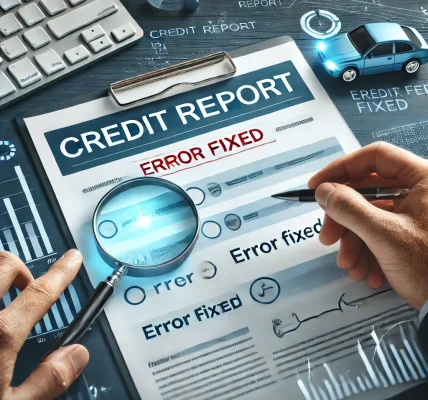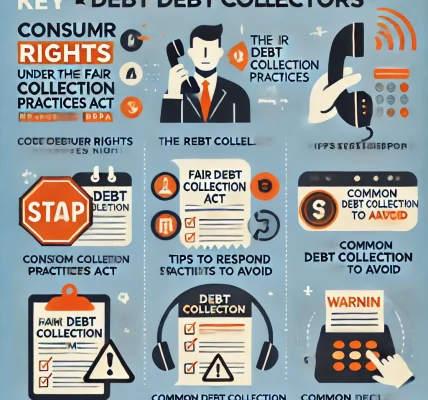Introduction
Debt can feel overwhelming, but with the right repayment strategy, you can take control of your finances and become debt-free. Two of the most popular debt repayment methods are the Debt Snowball and Debt Avalanche strategies. While both approaches can help you eliminate debt, they work differently and suit different financial situations.
In this guide, we’ll explore how each strategy works, their pros and cons, and how to decide which method is best for your financial goals.
Understanding the Debt Snowball Method
The Debt Snowball method focuses on building momentum by paying off smaller debts first. Here’s how it works:
Steps to Implement the Debt Snowball Method:
- List Your Debts from Smallest to Largest – Ignore interest rates and order your debts based on their balances.
- Make Minimum Payments on All Debts – Continue making minimum payments on all debts except the smallest one.
- Put Extra Money Toward the Smallest Debt – Any extra cash you have should go toward eliminating the smallest debt first.
- Move to the Next Smallest Debt – Once the first debt is paid off, roll that payment into the next smallest debt and repeat the process.
Example of the Debt Snowball in Action:
Let’s say you have the following debts:
- Credit Card 1: $500 balance, 18% interest
- Medical Bill: $1,200 balance, 0% interest
- Credit Card 2: $2,500 balance, 22% interest
- Student Loan: $7,000 balance, 6% interest
Using the Debt Snowball method, you would focus on paying off the $500 credit card first. Once it’s cleared, you’d apply that payment amount to the next debt ($1,200 medical bill) while still making minimum payments on the others.
Pros of the Debt Snowball Method:
✔ Quick wins help build motivation. ✔ Psychological boost from eliminating debts faster. ✔ Simple and easy to follow.
Cons of the Debt Snowball Method:
✘ May cost more in interest over time if higher-interest debts are paid later. ✘ Doesn’t prioritize the most financially efficient approach.
Understanding the Debt Avalanche Method
The Debt Avalanche method focuses on minimizing interest costs by paying off the highest-interest debt first. Here’s how it works:
Steps to Implement the Debt Avalanche Method:
- List Your Debts from Highest to Lowest Interest Rate – Ignore balances and prioritize debts based on interest rates.
- Make Minimum Payments on All Debts – Continue making minimum payments on all debts except the highest-interest one.
- Put Extra Money Toward the Highest-Interest Debt – Any extra cash you have should go toward eliminating the debt with the highest interest rate.
- Move to the Next Highest-Interest Debt – Once the highest-interest debt is paid off, roll that payment into the next debt and repeat the process.
Example of the Debt Avalanche in Action:
Using the same debts as before:
- Credit Card 2: $2,500 balance, 22% interest
- Credit Card 1: $500 balance, 18% interest
- Student Loan: $7,000 balance, 6% interest
- Medical Bill: $1,200 balance, 0% interest
With the Debt Avalanche method, you’d focus on paying off the $2,500 credit card first (since it has the highest interest rate) while making minimum payments on the others. Once it’s cleared, you’d move to the next highest-interest debt (18% credit card) and continue the process.
Pros of the Debt Avalanche Method:
✔ Saves money by minimizing interest payments. ✔ Helps pay off debt faster in the long run. ✔ Most financially efficient strategy.
Cons of the Debt Avalanche Method:
✘ Progress may feel slower at first. ✘ Requires discipline and patience.
Debt Snowball vs. Debt Avalanche: Key Differences
| Feature | Debt Snowball | Debt Avalanche |
|---|---|---|
| Focus Area | Smallest balance first | Highest interest rate first |
| Motivation Type | Psychological wins | Financial efficiency |
| Cost Over Time | Can be more expensive | Saves money on interest |
| Best for People Who | Need quick motivation | Want to pay less in interest |
Which Debt Repayment Strategy Should You Choose?
The right debt repayment method depends on your financial situation, motivation style, and personal preferences. Here are some factors to consider:
Choose the Debt Snowball If:
- You need quick motivation to stay on track.
- You enjoy seeing fast progress.
- You struggle with staying disciplined.
Choose the Debt Avalanche If:
- You want to pay off debt in the most cost-effective way.
- You’re disciplined and don’t mind slower initial progress.
- You have high-interest debt that is costing you a lot over time.
Can You Combine the Two Methods?
Yes! Some people use a hybrid approach by starting with the Debt Snowball to build momentum and then switching to the Debt Avalanche once they feel motivated enough to focus on interest savings.
Example:
- Use the Debt Snowball to pay off a few small debts quickly.
- Once you have fewer debts left, switch to the Debt Avalanche method to focus on high-interest savings.
This hybrid approach offers both psychological motivation and financial efficiency.
Tips for Staying on Track with Debt Repayment
Regardless of which strategy you choose, here are some tips to ensure success:
✅ Create a Budget: Know your income and expenses to allocate extra funds toward debt repayment. ✅ Avoid Taking on New Debt: Stop using credit cards for unnecessary purchases while paying off existing debt. ✅ Automate Payments: Set up auto-pay for minimum payments to avoid missed deadlines. ✅ Find Extra Money: Look for ways to increase income or cut expenses to put more toward debt. ✅ Track Your Progress: Use a spreadsheet or an app like Mint or YNAB to monitor your repayment journey.
Conclusion
Both the Debt Snowball and Debt Avalanche methods can help you eliminate debt, but the best strategy depends on your personal goals and financial habits. If motivation is your biggest challenge, the Debt Snowball might be the right choice. If saving the most money on interest is your priority, the Debt Avalanche is the smarter route.
No matter which approach you take, the most important thing is to stay consistent, avoid new debt, and celebrate your progress along the way. Becoming debt-free is a journey, and with the right strategy, you’ll achieve financial freedom sooner than you think!
Legal Disclaimer: This article is for informational purposes only and does not constitute legal or financial advice. Always consult with a professional before making financial decisions.




